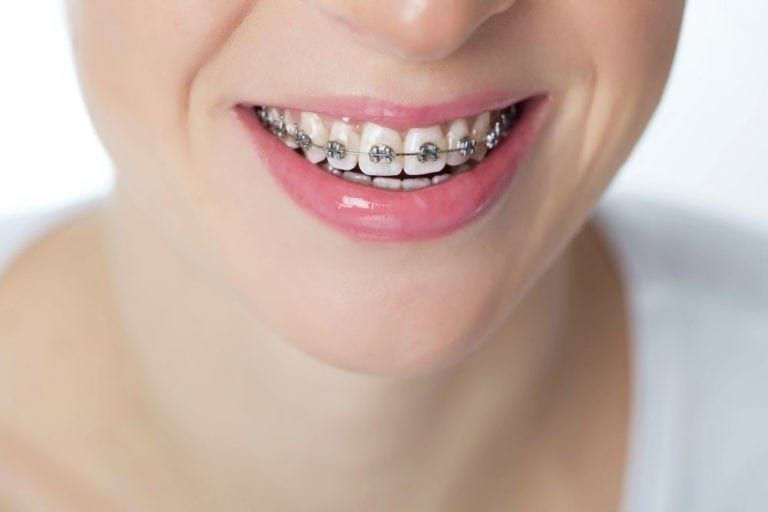The Difference Between Dentists and Orthodontists Explained
- dclinicdubai
- May 16
- 3 min read
When it comes to oral health, many people use the terms “dentist” and “orthodontist” interchangeably. However, these professionals have distinct roles and training. Whether you’re scheduling a routine check-up or seeking treatment for crooked teeth, it’s important to understand who to see. If you're exploring treatment options, Orthodontists in Dubai provide specialized care that differs significantly from general dentistry. Knowing the difference can help you make better, faster decisions for your dental health.

Education and Training:
Both dentists and orthodontists begin with the same foundational education—earning a dental degree. However, orthodontists continue their education with an additional 2–3 years of specialized training in jaw alignment and tooth movement.
Dentists: Typically complete 5–6 years of dental school
Orthodontists: Complete dental school plus an orthodontic residency focused on alignment and facial growth
Key difference: Orthodontists receive advanced training in correcting misaligned teeth and jaws
Scope of Practice:
While both professionals care for oral health, their specific functions differ. Dentists offer a broad range of services, whereas orthodontists concentrate on alignment and structure.
Dentists handle:
Cleanings and exams
Fillings and crowns
Root canals and tooth extractions
Gum disease treatment
Orthodontists handle:
Braces and Invisalign
Jaw realignment
Correction of bite issues
Early intervention for developmental concerns
Tools and Techniques Used:
The equipment and tools used by dentists and orthodontists reflect their different goals. Dentists focus on maintaining healthy teeth and gums, while orthodontists work on movement and structure.
Dentists commonly use:
X-rays
Dental scalers and drills
Fillings and bonding materials
Orthodontists typically use:
Braces (metal, ceramic, lingual)
Clear aligners
Palatal expanders and retainers
When to See a Dentist vs. an Orthodontist:
Knowing when to visit each specialist can save time and ensure proper treatment. Many people first see a dentist and are then referred to an orthodontist if structural issues are detected.
Visit a dentist if you have:
Toothaches or cavities
Gum inflammation or bleeding
Broken or chipped teeth
General dental check-ups
See an orthodontist if you notice:
Crowded or crooked teeth
Overbite, underbite, or crossbite
Jaw pain or clicking
Difficulty chewing or speaking due to alignment issues
Collaboration Between Dentists and Orthodontists:
Dentists and orthodontists often work together to ensure comprehensive care. A general dentist may identify the need for orthodontic treatment during a routine exam and then refer the patient to an orthodontist for specialized care.
Examples of collaboration:
Dentists cleaning teeth and monitoring overall health during orthodontic treatment
Orthodontists coordinating treatment with dentists to avoid issues like cavities during braces
Post-treatment dental care following orthodontic correction
Cost Differences and Insurance:
Cost is another major factor that differentiates dental and orthodontic care. Dental insurance plans typically cover preventive and restorative treatments, while orthodontic care may be partially or fully excluded depending on the plan.
Dental procedures are generally:
Less expensive
Covered more frequently by insurance
Orthodontic treatment is often:
A higher out-of-pocket cost
Covered under specific orthodontic plans or premium insurance packages
Available with payment plans from providers, especially with Orthodontists in Dubai offering flexible packages
Technology and Treatment Advancements:
Both fields benefit from rapid technological advancements, but orthodontics is particularly driven by innovation in treatment delivery.
Dentists benefit from:
Digital X-rays
Laser dentistry
Computer-aided design (CAD) for crowns and restorations
Orthodontists use:
3D imaging for precision alignment
Digital impressions instead of messy molds
AI-driven planning for treatments like Invisalign
Remote monitoring apps to track progress
Pediatric Considerations:
Children may need different types of care from both dentists and orthodontists, especially during developmental years. Dentists monitor the overall growth of baby and adult teeth, while orthodontists can guide facial and dental development early on.
Pediatric dentists focus on:
Teaching oral hygiene
Filling cavities
Monitoring tooth eruption
Pediatric orthodontists focus on:
Detecting early misalignment
Using space maintainers or partial braces
Reducing future treatment complexity
Personalized Patient Experience:
Both professionals prioritize patient comfort, but orthodontic care tends to involve longer treatment plans and ongoing adjustment visits. A personalized experience can make a big difference in the patient’s journey.
Dentists offer:
One-time or short-term procedures
Preventive education and oral hygiene advice
Orthodontists provide:
Long-term treatment planning
Custom appliance fittings
Routine adjustments and follow-up
Note: Many Orthodontists in Dubai emphasize luxury patient experiences, digital consultations, and multilingual care to serve the city’s diverse population.
Final Thoughts
While dentists and orthodontists both contribute to your oral health, their expertise and focus areas are quite distinct. Dentists handle the day-to-day care of your teeth and gums, while orthodontists specialize in structural alignment and correction. Understanding when to consult each professional can lead to faster diagnoses and better results. Whether you're dealing with crooked teeth or a routine cavity, the right specialist can make all the difference. And for those seeking high-quality, specialized care, Orthodontists in Dubai continue to set global standards in personalized orthodontic treatment.


Comments